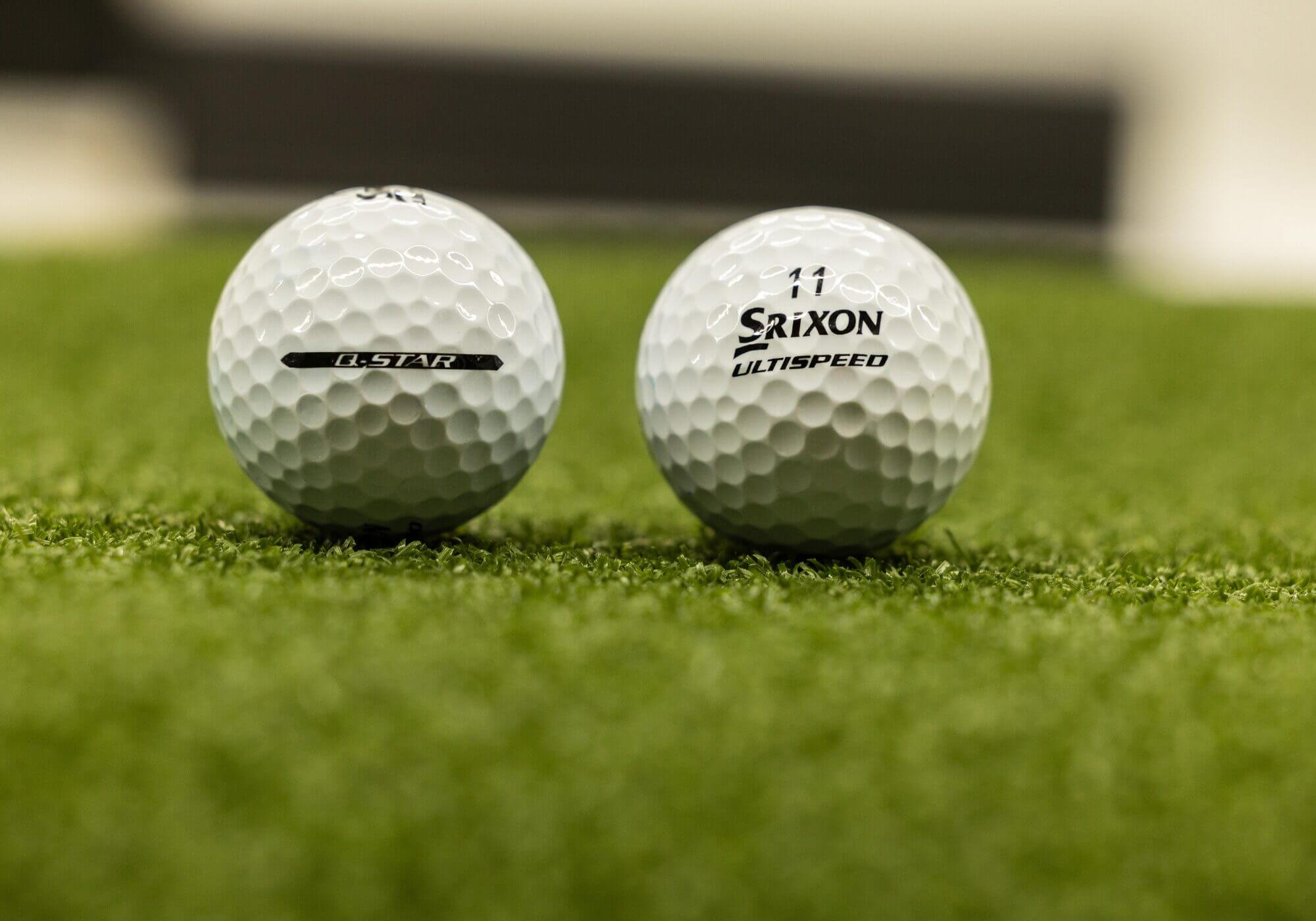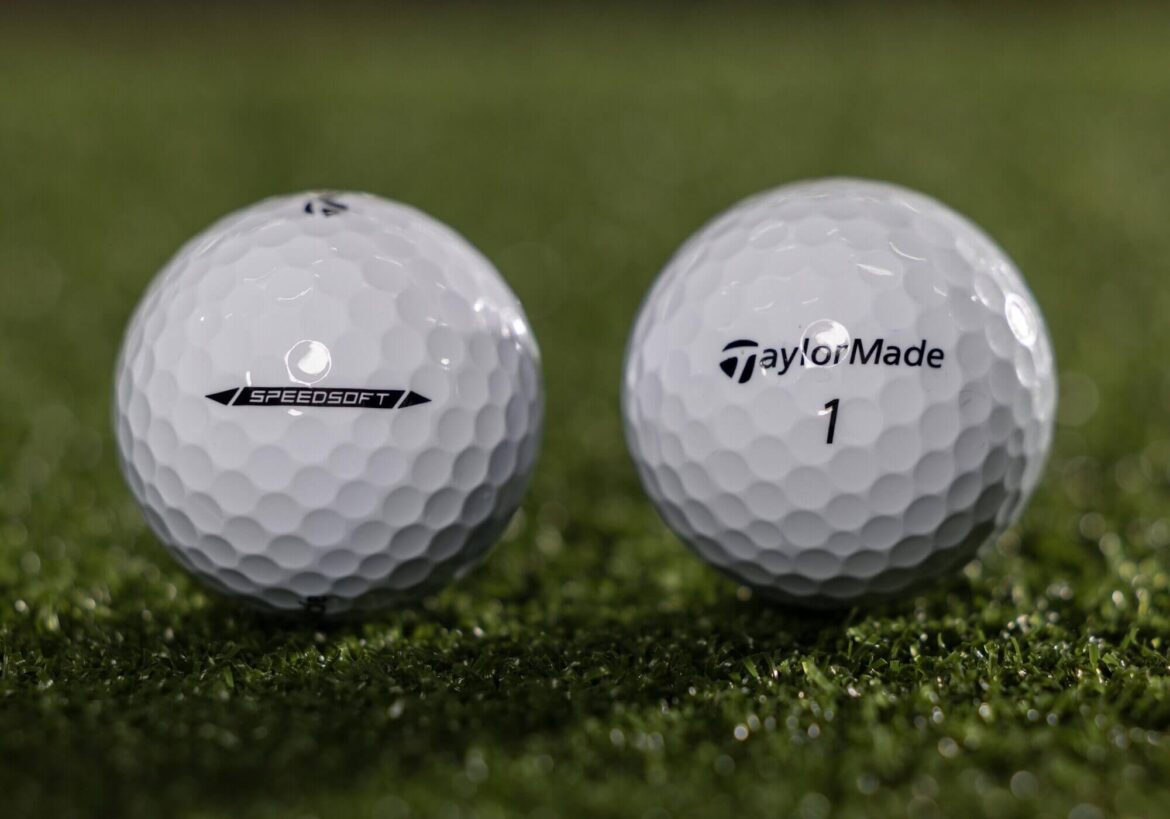If your wedge shots refuse to check up, it might not be your technique. It could be your golf ball.
In MyGolfSpy’s 2025 Golf Ball Test, the biggest differences weren’t off the driver. They were on the shortest shots. At just 35 yards, spin rates varied by nearly 4,000 rpm from top to bottom, proving that cover material and construction have a massive impact on control.
Two quick truths
- Ionomer covers cost you spin. Most budget balls with Surlyn or ionomer covers lost 1,500–3,000 rpm of greenside spin compared to urethane.
- Soft feel isn’t the same as high spin. Low-compression balls often launch higher and slip off the clubface instead of grabbing the grooves.
For context, the highest-spinning ball, the TaylorMade TP5, averaged 6,026 rpm on the 35-yard wedge test. The five balls below were nowhere close.
Titleist Velocity – 2,058 rpm
Velocity is built to fly far, not to stop fast. Its firm ionomer cover produces the lowest greenside spin in the entire test, barely a third of the top model. On chip and pitch shots, it launches high and releases quickly, making it one of the toughest balls to control on firm greens.
Try instead:
- Titleist Pro V1x — Higher flight with true wedge spin and a firmer urethane feel.
- Maxfli Tour X — Value urethane that keeps driver distance high while adding short-game grip.
TaylorMade SpeedSoft – 3,176 rpm
SpeedSoft lives up to its name off the tee but the ultra-low compression dampens groove friction on partial swings. The result is a ball that launches easily yet rolls out far more than most golfers expect. It may have a softer feel but it lacks the stopping power needed for scoring shots.
Try instead:
- TaylorMade TP5 — Highest short-game spin in the 2025 test, offering far better control around the greens.
- Vice Pro — Lower-cost urethane model that delivers consistent spin across irons and wedges.
Pinnacle Rush – 3,227 rpm
Rush is a classic distance ball. It’s fast, firm and inexpensive, but its Surlyn cover gives up a lot of control. At just over 3,200 rpm, it spun barely half as much as the test leader. For players chasing yardage, that’s fine. If you’re looking to hold a green, it’s a challenge.
Try instead:
- Callaway Chrome Tour X — Tour-level ball that maintains distance while adding meaningful wedge spin.
- PXG Xtreme Tour X — One of the best value urethane options in 2025, offering a strong bite without a premium price.
Titleist TruFeel – 4,200 rpm
TruFeel’s soft core makes it easy to launch but the ionomer cover limits the friction necessary for control. Golfers who like the soft Titleist feel will need to move up to urethane to gain real greenside stopping power.
Try instead:
- Titleist Pro V1 — Balanced flight and spin profile that works across all swing speeds.
- Wilson Triad — Mid-priced urethane with predictable spin and distance control.

Srixon Q-STAR Ultispeed – 4,364 rpm
Ultispeed is Srixon’s distance-focused ionomer model, designed to deliver easy launch and plenty of speed across swing speeds. In our wedge test, however, it couldn’t match its urethane siblings for greenside spin. At just over 4,300 rpm, shots launched high and released rather than grabbing.
Try instead:
- Srixon Z-STAR DIAMOND — Tour-level spin and flight control with stronger feel through impact.
- Vice Pro Plus — Compact, fast urethane ball with mid-flight trajectory and dependable bite.
Bottom line
If you can’t get your ball to grab when you want it to, the problem may not be your technique. It could be your ball. Every ball listed here sits far below the 6,000-rpm mark of top performers like TP5, TOUR B XS and Chrome Tour X. Try some of the alternatives we suggest and see the difference.
The post Can’t Get Spin Around the Greens? These 5 Golf Balls Could Be The Reason appeared first on MyGolfSpy.
